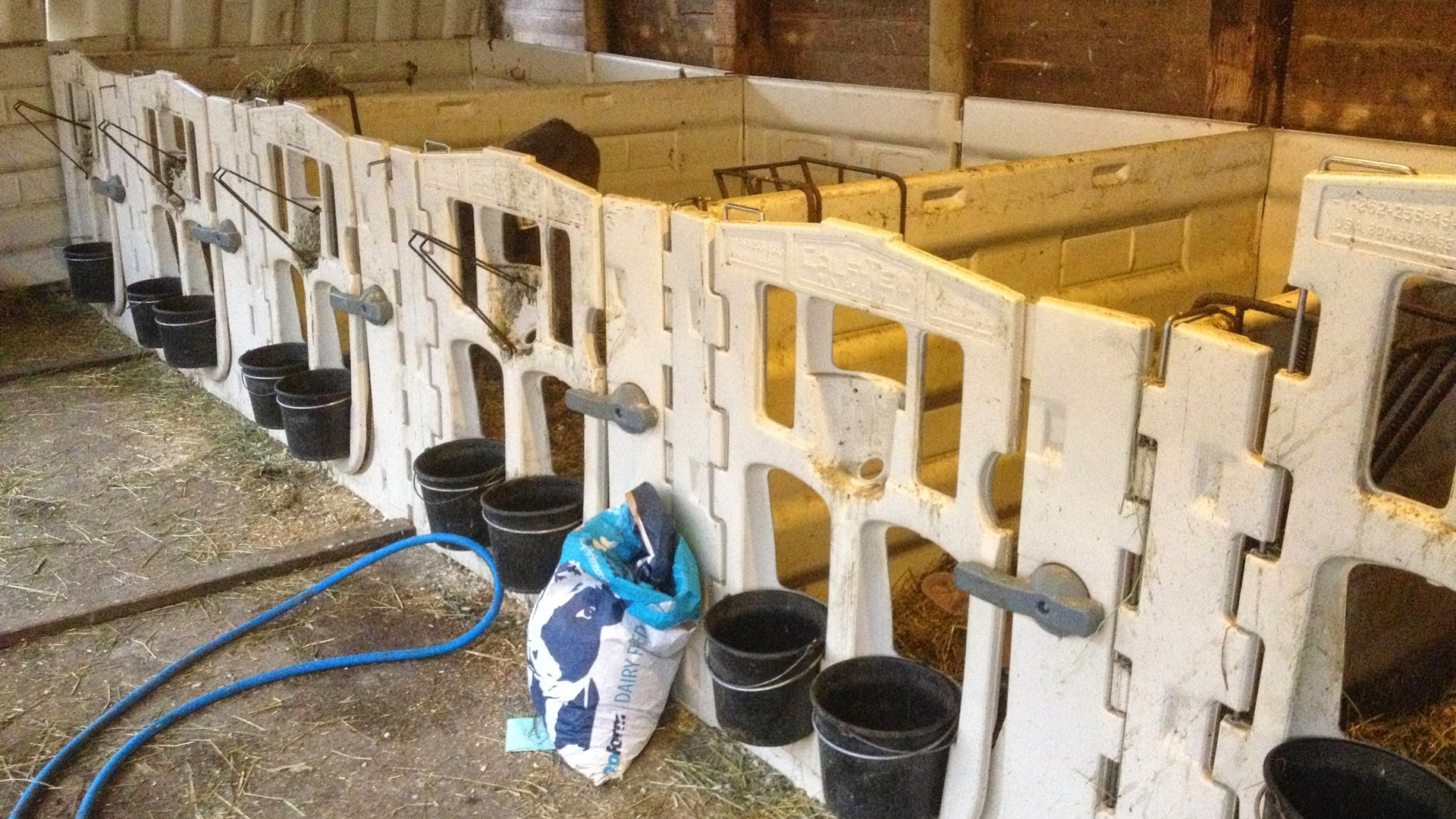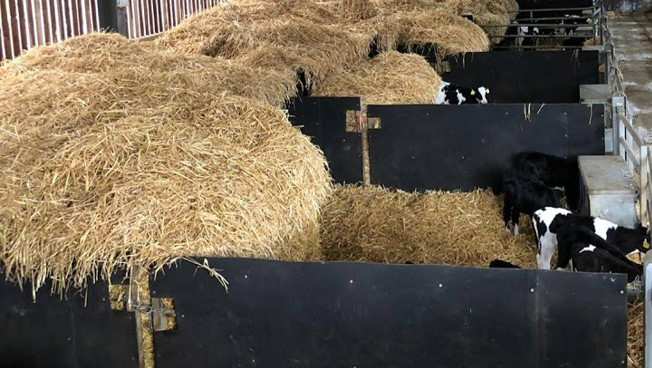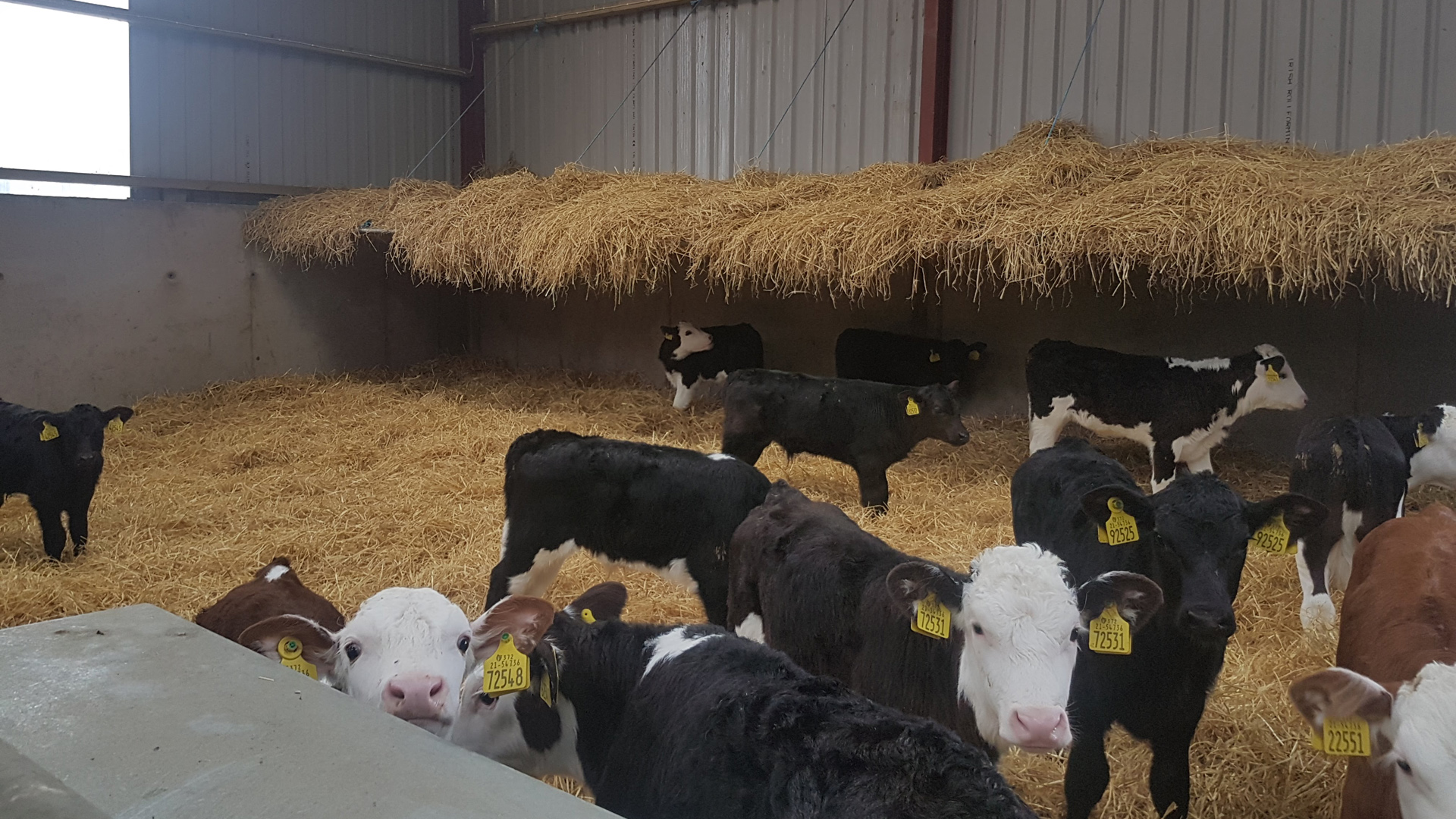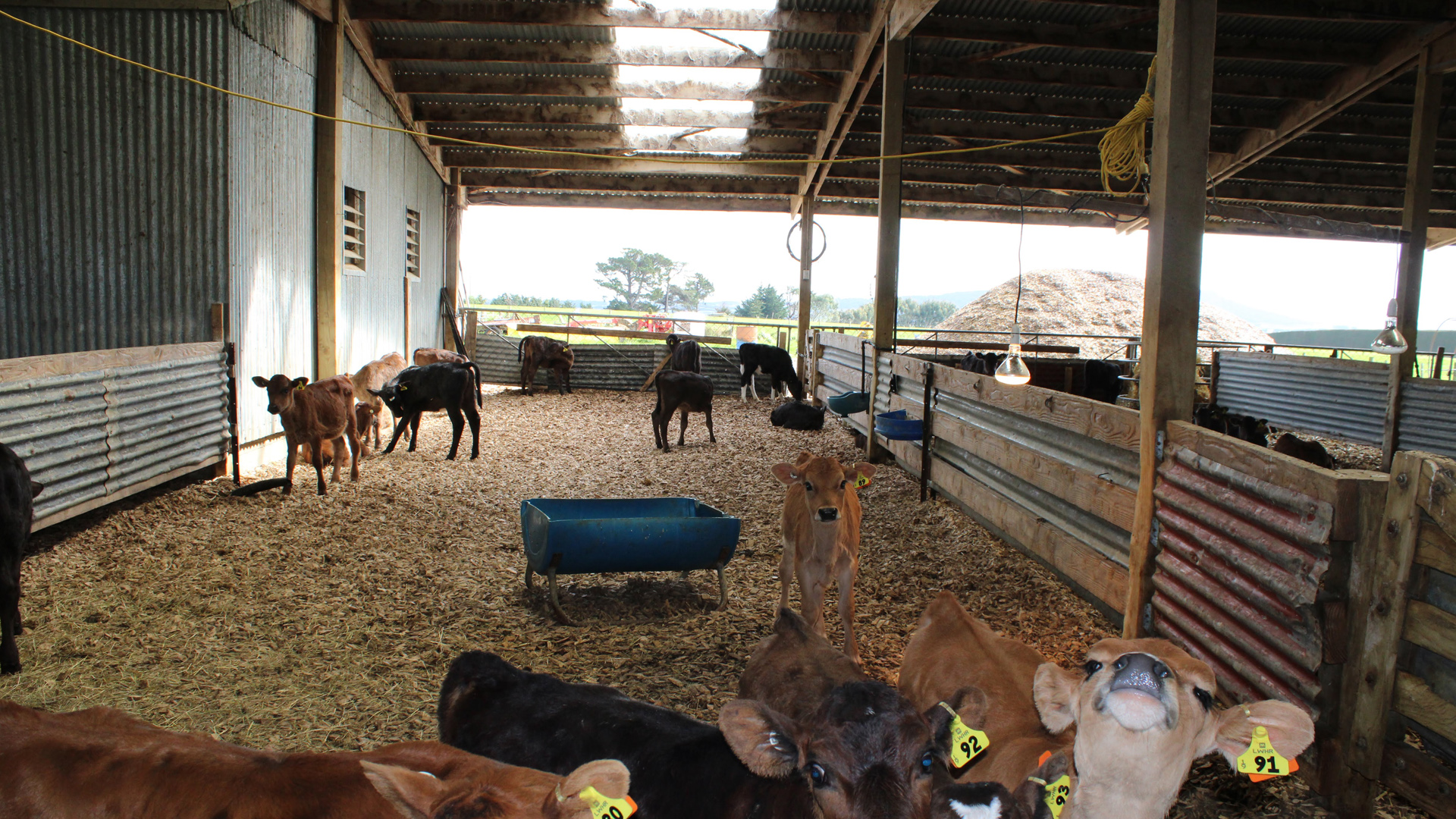Calf housing – Frequently Asked Questions




Housing is one of the most complex elements of calf rearing. It is not possible to create the ideal calf house for all conditions. Understanding what we need to do for the calves and what we have to work with helps a lot. But essentially there are some basics that we must get right to try account for the varied environment calves face in the most vulnerable weeks of their life. One of the key elements to remember when changing calf housing is that we must take the advice we are given and really consider it relative to our own farm. No one farm is the same as another and therefore there is no one blueprint suitable for everyone to work from. Recent online polls have given us a little insight into people’s yards and what they are working with and we have put some ‘food for thought’ to go with that.
Should I use individual pens for new born calves?
While individual penning is not an option for everyone based on regulations for their farm, it is an option used by many; 60% of respondents in our online poll use individual penning to start calves off in life. Individual penning is an excellent tool when training calves to suck, particularly if they are weak or slow starters. Furthermore, it is beneficial when a farm might only have 1-2 calves per week, calving year-round. In this instance grouping a new born calf with an older calf can be a great disadvantage for the new born calf and more difficult for the calf carer to manage. Individually penning new born calves also aids the control of disease, particularly in an outbreak where calves are contracting the issue in the first days of life. They have time to become stronger to fight the illness and control of disease spread is more achievable.
What size groups should I have?
In this scenario less is more. In a recent online poll, the majority (83%) house less than 15 per pen. This is ideal. There is less competition with calves and lower risk of transmitting disease. Furthermore, it is easier to monitor calf health when in smaller groups.
When housing calves in 20-30 or even more, it is essential to ensure there is an abundance of head space for concentrates, even if they are ad-lib. It is also easy to forget that they need extra water. Calves need approximately 2 inches (5 cm) headspace per calf.
It is also of critical importance to take extra time to monitor the health of calves in large groups. It is too easy to miss a calf at the beginning of clinical signs, the time in which the effects can be greatly minimised.
Are solid barriers a good idea in calf pens?
When it comes to dividing our pens, it is a matter that its impact is grossly underestimated. In our recent online poll, half of the respondents use gates while others use solid dividers, most being boarded gates and some concrete walls.
The greatest underestimation seems to be the impact of using gates only on respiratory illness in calves. It is astonishing the chill rate in calves in houses without solid dividers between pens. While we have been told at length about the importance of allowing air to circulate in our calf houses, the draft and wind speed and ability to form a ‘cubby’ for calves is also important. It is trying to find the balance that is most difficult. Keeping solid dividers not only minimises nose to nose contact between calves, it reduces the risk of respiratory illnesses.
Are canopies a good idea?
We asked farmers if they provide a false roof within their calf pens, also known as a canopy for calves and the majority of respondents (61%) said no. A canopy is suitable for very tall sheds. We create tall sheds to provide lots of air and for access with machinery. While both of these are important, they can be negative at times. For very young calves, they cannot regulate their body temperature efficiently and so cannot always warm themselves sufficiently on colder, windy days. This is where a canopy become an excellent tool. In applying a canopy to our pens, we are providing calves with options. And calves, as a rule are clever and will choose to lie down where they are warm and dry. Young calves and even older calves on cold days will choose to lay under the canopies to keep themselves warmer. The canopy does not cover the entire bedded area for calves and so you will find calves may choose to lay out from under the canopies. This is usually on warm days, with new clean deep fresh bedding or just older calves in general as they have a greater ability to regulate their own internal thermostat, therefore not feeling the cold as much.
Canopies are not suitable or necessary in shed with low roofs, sheds with pens too small for calves to have an option or if they canopy cannot be implemented safely.
The Stack Effect – should I account for this in my calf house?
We asked online users if they believe in the stack effect for calves. Interestingly 31% did not know what the stack effect was, 47% of respondents said yes while the remaining respondents said no. the ‘stack effect’ is reliant on heat being generated from the animals. This heat drives the air movement. As heat rises, the cold air comes in through the ventilated portions of the shed down to animal level, the heat of from the animals drives this air upwards to escape out through the open space(s) in the roof and in turn drives cold fresh air back down. The cycle continues. While this works for older animals, it cannot be relied upon for calves. The body mass of calves is far less than for older animals, their small bodies do not have the same capacity to generate and move heat. Furthermore, the rumen also generate heat with fermentation and without a developed rumen, calves generate even less heat per cubic metre than older animals. Therefore, calves cannot generate sufficient heat to move air anywhere and so the stack effect is not relevant in a conversation about young calves. This is a mistake often made by many as the logic exists but in practise it doesn’t work.
What do I need to consider for my ventilation?
In a recent online poll, the majority of respondents are relying solely on natural ventilation while almost 20% said they rely on natural and mechanical together. Regardless of the choice, the ventilation we rely on is a gamble for calves. Each year is different, which is especially true in recent years. The weather changes daily and sometimes hourly. It makes it very difficult to decide upon the best method of ventilation. Aside from that we must consider the factors which include positioning of the shed, the altitude and its location relative to other sheds. Every yard is different and every farm situation is different. As we can’t rely on the stack effect, we must rely on natural or mechanical ventilation to work for itself. This means we need to have the fresh air coming in and pushing the air around and out of the shed without the help of the animals. This air, particularly on cold days can be too much for baby calves but alternatively can be too little for older calves or during the warmer seasons. It is better to go with more air and work on creating spaces for calves within pens for the colder days.
An alternative is mechanical ventilation. The aim of this is to control the air flow in the house with a pressure system drawing the air in and spreading it around the house. This will also push the stale air out.
There is a rule of thumb that calves should have a minimum of 7m3 air each. A simple calculation to get a general idea of what each calf has is:
Depth (m) × Width (m) × Average roof Height (m) = volume.
Volume ÷ 7m3 = Total number of calves based on cubic air capacity.
For example: 9.6m × 4.8m × 4.6m = 211.968m ÷ 7 = 30 calves. This means 30 calves can be housed here according to air space. There are other factors to consider, such as floor space and feeding space.
The thing to be aware of with calculating the is that it doesn’t account for the flow of the air which is dictated by weather and shed position. Economically it is not possible to fully control for this but it is important to be aware of it as it can dictate the selection of ventilated portion of the shed. The various options have various void ratios, that is they allow varied amounts of air through.
How much floor space should I give my calves
Floor space is most certainly a grossly underestimated element of a calf house. More space = less problems. Often in our airy sheds it is floor space that restricts calves rather than air circulation. Minimum requirements are 1.7m2 per calf but this is not enough, particularly for breeds with an average birth weight of 35 kg and staying indoors until after weaning. Calves thrive far better if they have 2m2 or more each. This is particularly noted on larger farms, and block calving systems. These systems have greater pressure on calves due to higher volumes of calves sharing the same space, air space or moving through the calf houses in a shorter time. On many of the most successful farms around the world, calves have up to 3m2 or even 4m2. With this much space farmers note far less issues in calves and greater thrive. They have more space to move around allowing them freedom to play and additional space to forage. Furthermore, the shape of a pen can have a significant impact on the calves. Anecdotally housing that allows calves to run freely in straight lines typically has happier healthy calves than calves that can only run a couple of feet.
Floor space is a calculation similar to air space:
Depth (m) × Width (m) = Area. Area ÷ 1.7m2 = Total number of calves based on area.
If we use 2m2 as the rule instead of 1.7m2 and the same example as the above ventilation example we can see there is more air space than floor space for calves therefore we will fill the pen based on air space.
9.6m × 4.8m = 46.08 m ÷ 2.0 = 23 calves
So instead of allowing 30 calves into the pen we should only have 23 calves so we don’t compromise their health.
What is important about the slope of the floor?
The slope of the floor is highly important as it controls drainage within the pen. As many people are dealing with existing buildings rather than a greenfield site, it is just as important to know the slope of your floor you are dealing with and reacting to manage it in the best possible way.
As many people are dealing with converted sheds, the slope of the floor is already in existence. In an online poll we conducted 56% of floors sloped to the front which is what we want. Sloping away from the bedding towards the feeding area. But this means that 44% of respondents had a different story, this is nearly half.
A total of 26.5% of respondents said the floor has no slope while the remaining respondents had floors sloping sideways or to the back. For a floor that is not sloping at all, extra bedding will be required as there is no run-off. This means that more straw would be required, however this is an expensive and labour-intensive method. Other options are woodchip, stones or slats placed under the straw bedding. The main aim is to create distance between the calves and the wet, ammonia filled floor.
A floor sloping to the side has options such as creating channels between the pens to catch the run-off, and have these sloping to the front of the pen into channels that will carry it away. If this is not possible another option is having an absorbent layer underneath the bedding and ensuring the older calves are at the bottom of the slope.
If the slope moves to the back of the pen an option could be to drill little holes at the backs of the pens to create run off, a channel can be created at the back of the house to collect run-off.
***Key point to remember***
There is no magic house for calves or one size fits all. But we can look at what we have to work with and find options to suit our own individual circumstances. Any minimum or maximum recommendations are exactly that, minimum or maximum. It is not a goal; many people look at it as a goal and this can be the limiting factor in what makes their calf house perfect for their farm.
Contact us
“They are the healthiest calves I have,’’ he says.
Bonanza Calf Nutrition
Producers of the renowned Shine range of milk replacers for calves and lambs.
© 2017 Bonanza Calf Nutrition Ltd.
FIND US
